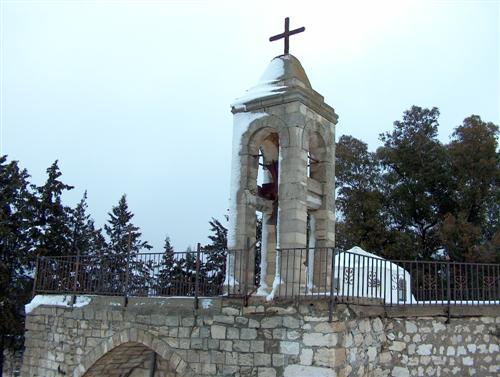by Vogue - Living Brigitte Bardot put St.-Tropez on the map. Beirut, on the other hand, was at the height of its Golden Age when the starlet set foot on its cosmopolitan shores—another celebrity endorsement was superfluous. The vibrant city was a jet-setter’s playground, with a social scene that rivaled its European counterparts. It’s what attracted Bardot in the first place. A 15-year civil war ravaged more than just the country’s reputation, but two decades of reconstruction have polished away the grit to reveal its golden sheen. Set between snowcapped mountains and the Mediterranean Sea, Beirut is an enchanting place to retrace Bardot’s steps.
Where to stay
Lebanon’s most glamorous guests settled in at the Phoenicia hotel, the nightlife capital of Beirut in its prime. Bardot was a poolside fixture, her lounge chair previously reserved for guests like Jean-Paul Belmondo and Jean Seberg. The five-star hotel has been restored to its decadent, mid-century glory in recent years, and the mosaic pool retains much of its original character, including views of the sapphire sea. Thanks to a raucous cabaret club and hard-partying Hollywood occupants—Marlon Brando among them—the hotel’s pre-war debauchery has become the stuff of legend. But with maturity comes a more elegant, if more reserved, Phoenicia. The Phoenicia faced stiff competition in Bardot’s day, and today’s voyageur has plenty of five-star hotel options. The quietly extravagant Le Gray Beirut, a Gordon Campbell Gray property, is favored for its prime downtown position and a rooftop infinity pool that dissolves into the skyline.
Where to shop
Paparazzi trailed Bardot around the old souks, an ancient marketplace once populated by vegetable stalls, tailors, and jewelry shops. Rebuilt in the postwar period to resemble a luxury mall-bazaar hybrid, the downtown shopping center now includes an assortment of Bardot-approved boutiques, including Saint Laurent.
When in town, Bardot called on Assaad Georges Daou, jeweler to monarchs and screen queens. His shop stood on a sea-facing edge of the souks called Avenue des Français—the Bond Street of ’60s Beirut. Familiar names like Cartier now command the area, and his daughter, Dalia Daou, carries on the family business with her own eponymous jewelry label in London. Beirut’s new guard has migrated to the nearby Mar Mikhael neighborhood, lined with leafy trees and trendy concept bars. Ralph Masri’s showroom alone is worth the trip. The jeweler was born too late to woo Bardot with his oversize arabesque hoops, but Jordan’s Queen Rania, Jessica Alba, and Gigi Hadid are fans.
On a sliver of city called the Port District, Rabih Kayrouz’s sun-drenched boutique captures the easygoing sensuality Bardot mastered. Not one for sentimentality, the Lebanese designer adds a contemporary filter to her signature style: relaxed capri pants with a paper-bag waist, sheer midi skirts, and oversized blouses that slip nonchalantly off one shoulder. Emerging designer Timi Hayek takes a more literal approach with a spring/summer collection nicknamed “BB,” available at her boutique in Monot, a cobblestoned neighborhood where jasmine blossoms perfume the air. Hayek’s hand-stitched gingham sundresses and calf-grazing circle skirts are made for running barefoot through warm sand.
What to do
When temperatures creep up, the Beirut masses retreat to nearby mountains or beaches. Bardot was no exception. She set out for Byblos, then a quiet, 8,000-year-old fishing village with one attraction: Byblos Fishing Club. Although diners no longer catch their own dinner as they did in BB’s day, the portside restaurant still satisfies a craving for fresh seafood and small Lebanese plates called mezze (think hummus and tabbouleh). Bardot likely strolled the souk just steps away, passing rickety fishing boats and ancient ruins on her to its entrance. The historic market has changed little since the Ottoman era, and now attracts locals and tourists with outdoor bars and restaurants, along with souvenir stands hawking overpriced knickknacks.
Pépé Abed, Byblos Fishing Club’s larger-than-life founder (and Brando’s close friend), invited famous guests to spend the night in private quarters off the restaurant. This is Lebanese hospitality at its finest, and an offer no visitor should refuse. The closest thing to a homestay is Beit al Batroun, a charming bed and breakfast set among lemon and olive trees in the hills above neighboring Batroun. The guesthouse is new but offers a glimpse of times past with traditional Lebanese architecture and cozy rooms adorned with lust-worthy vintage pieces.
Bardot bid adieu to Lebanon on the Vandura. Unfortunately, she was later rescued when mechanical troubles left her and the cruise ship stranded at sea. It’s part of her holiday best forgotten, so why not enjoy the beaches along Lebanon’s northern coast instead? Orchid Beach Lounge offers the champagne-drenched amusement that once appealed to Bardot. On the Batroun coast, beautiful people cradle cocktails in the resort’s pool and private jacuzzis. Sunbathers recline on lounge chairs that seem to float above the sea’s gentle waves. It has hints of ’60s St.-Tropez. Or, better yet, a Golden Age Beirut.

.jpg)




